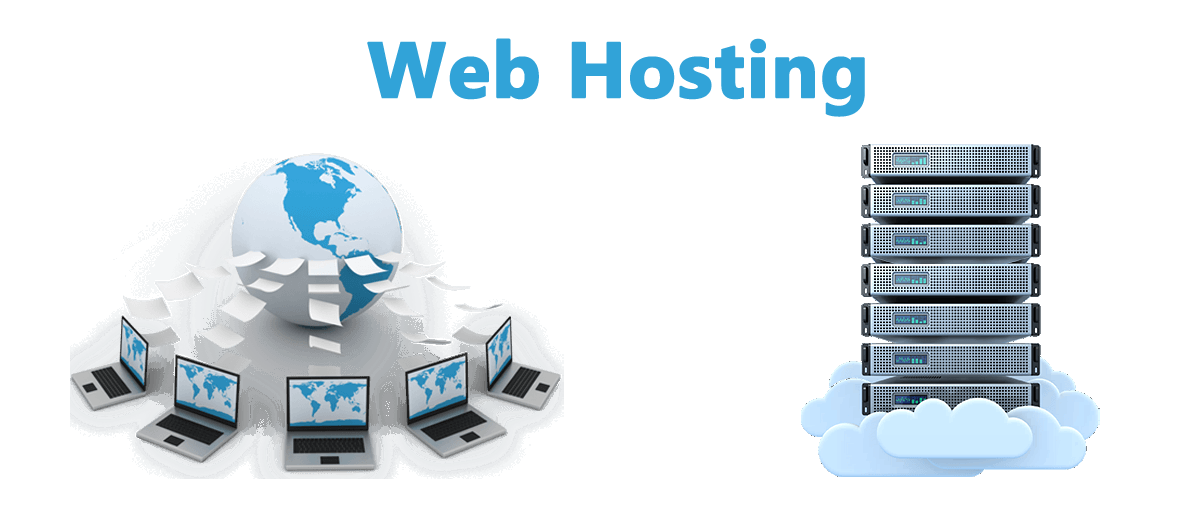Defining cPanel
The control panel, or cPanel, is a popular control panel that supports the web hosting server. It allows the server administrative control. It also provides you access to a variety of hosting features that would otherwise demand more technical skills to manage. For both hosting and developers, cPanel makes the use of a complex system more manageable.
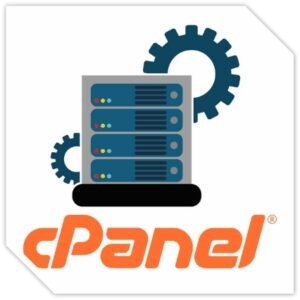
Besides helping in management, cPanel also helps in website publishing, organizing files, domain management, creating e-mail accounts, and much more. It has two basic interfaces:
- cPanel
- Web Hosting Manager (WHM)
Both interfaces can be defined as user interface and server management interface respectively. These interfaces allow you to manage your website and provide web hosts with tools that help them in handling the server.
Main Sections and features In cPanel and How To Use It
SECTIONS
cPanel has several categories, also known as sections. It is divided into five components, as shown below.
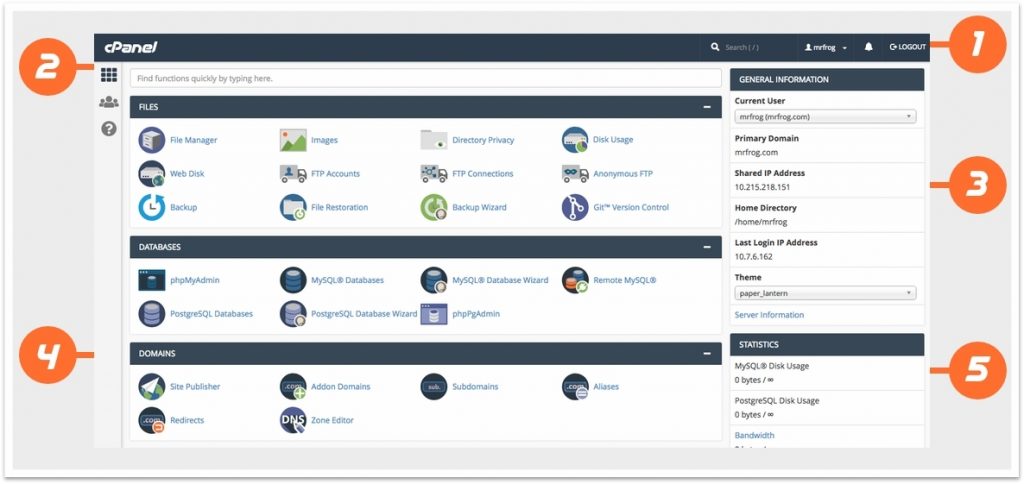
1. Navigation bar
The navigation bar contains account information that is currently active, options for changing settings, and a link to log out of your account.
2. Sidebar
The sidebar appears on every cPanel interface. Multiple features are accessible from the sidebar. We can return to the cPanel home interface, by clicking the Home icon. This area gives you access to every feature in cPanel.
3. General Information
Some information about your cPanel account is displayed in the General Information section such as:
- Primary Domain
- Home Directory
- Theme
- Last Login IP Address
- Home Directory
- Server Information
4. FEATURES
There are a few features or buttons present on the cPanel dashboard. The design of the dashboard varies as per required by the web Host. Some of the main features are as follows:
- Domain Manager
- File Manager
- E-mail Manager
- Database Manager
5. Statistics
The Statistics area of your cPanel account displays crucial usage statistics. This section employs colors and symbols to provide information about the usage of your cPanel account.
It has different backgrounds, i.e., Yellow and red respective to the criteria. Statistics feature also includes symbols such as:
- Infinity symbol (∞):
This symbol denotes a limitless quota. Otherwise, the UI shows the quota restrictions for your account.
- A plus icon (+):
Click this icon to raise your hosting plan’s quota for this statistic. If your hosting provider has enabled integration links to your server, this icon will show.
- A wrench icon ():
Click this icon to go to the cPanel interface where you can lower your quota consumption.
FEATURES
In section four of the cPanel, multiple features are made available to the web hosts for better website management. These are also called buttons.
- File Management Features

- File Manager
- FTP Accounts
- Backup
- Disk Usage
- Web Disk
- Directory Privacy
- File Restoration
- Database Management Features
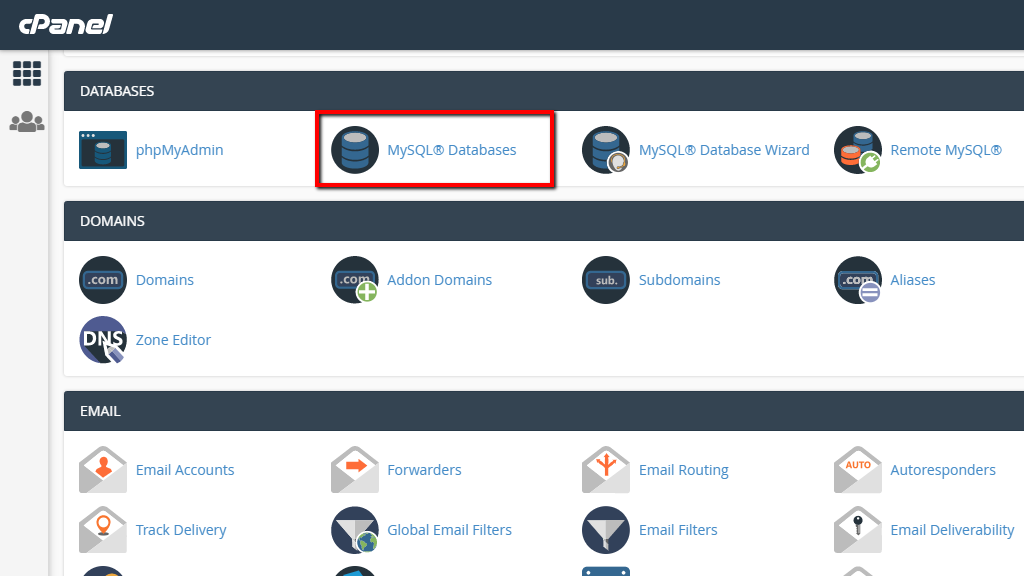
- phpMyAdmin
- MySQL Database
- Remote MySQL
- PostgreSQL Database
- Email Management Feature
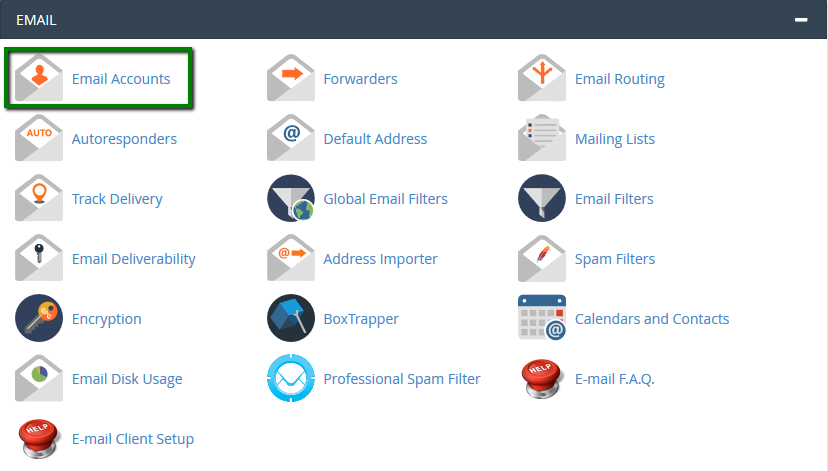
- Email Accounts
- Autoresponders
- Forwarders
- Email Routing
- Spam Filters
- Domain Management Feature

- Domains
In this part, you can add a new domain for a freshly installed WordPress site.
- Addons Domains
Adding this feature would help you to create additional domains to park or merge into the sites with addon domains.
- Subdomains
If you add this feature from cPanel it will allow you to create subsections of your existing site instead of purchasing and handling a new domain.
- Aliases
This is where you can link your primary domain to additional domain names. The add-ons function as “aliases”, allowing you to access the site from any of the domains you select.
- Redirects
This feature includes URLs that are sent to other URLs.
- Zone Editor
In the Zone Editor feature, you can create, alter, and eliminate the Domain Name System (DNS). DNS is a system that changes human-readable domain names such as example.com into computer-readable IP addresses.
Advantages and Disadvantages Of cPanel

ADVANTAGES
cPanel is a new web-based control panel that allows users to manage their web hosting accounts or dedicated servers. You don’t need to use the terminal to do administrative tasks on your account or server.
The best thing about cPanel is that you can use it and open a terminal whenever you want, and it accepts modifications made through a terminal. Many developers produce cPanel add-ons, both free and premium, that allow you to automate or manage numerous operations.
There are hundreds of plugins to choose from, so it’s simple to select one and add a feature that isn’t included by default. If you have a dedicated server and have highly precise requirements, finding a developer to create a plugin or add-on is rather simple.
Not only is cPanel user-friendly in terms of simplicity of use, but it is also the most popular control panel available. The user base and community support are enormous. The large community and free materials almost certainly cover every facet of cPanel hosting. This makes it quite simple for anyone to use.
DISADVANTAGES
Given its popularity, it’s no surprise that cPanel’s drawbacks outnumber its benefits. One of the most common criticisms of cPanel is the default theme. In 2014, it appears and feels archaic, however, most administrators can select a theme and customize the interface to their liking.
Because of its broad use, it draws a disproportionately large number of hackers. You can defend your server from the most common and advanced assaults like DDoS and SQL injection if you take the essential steps to safeguard Apache, PHP, and MySQL.
A cPanel license is also currently more expensive than the competition. It’s great for small and medium-sized websites, and it’s not good for large ones. It can take a long time to repair a bug or acknowledge and resolve an exploit. Overall, assistance is excellent, although the competition in this area outperforms cPanel.
Conclusion
In a nutshell, the cPanel dashboard was created to make website hosting more appealing to the typical user. It’s useful for adding your emails, generating backups, and inspecting files, among other things. The cPanel dashboard is used by the majority of low-cost website providers, so you’ll most likely come across it when you’re first starting started with your website.


